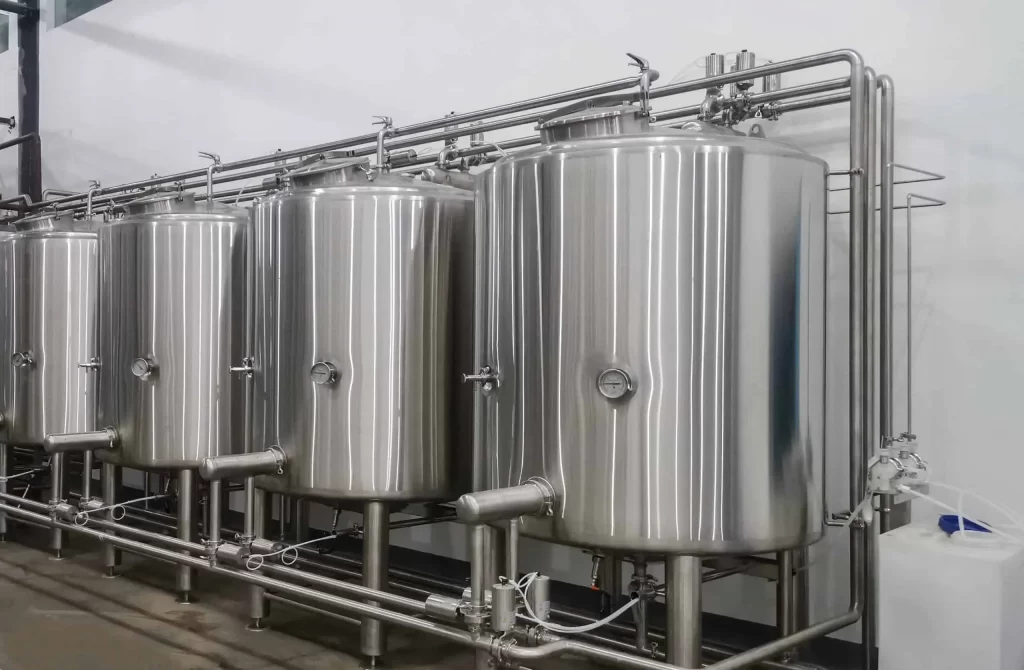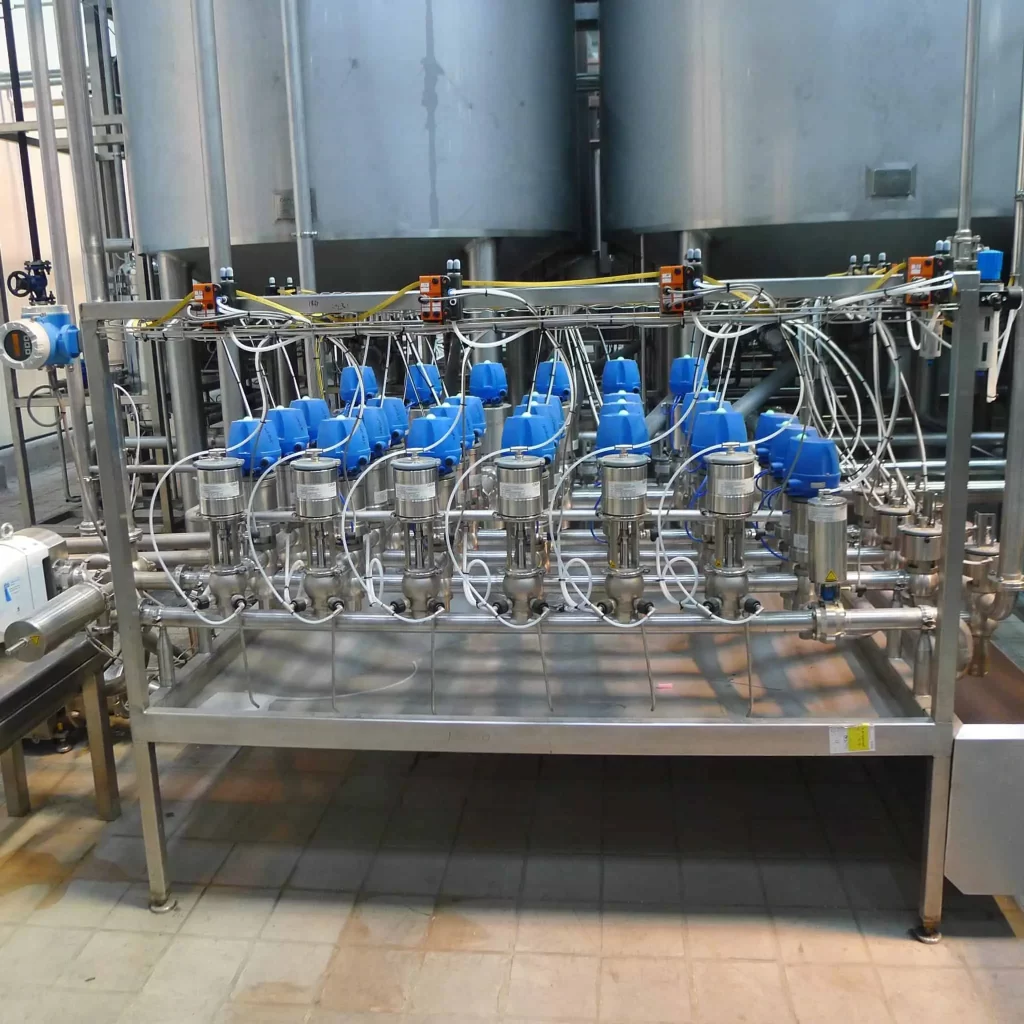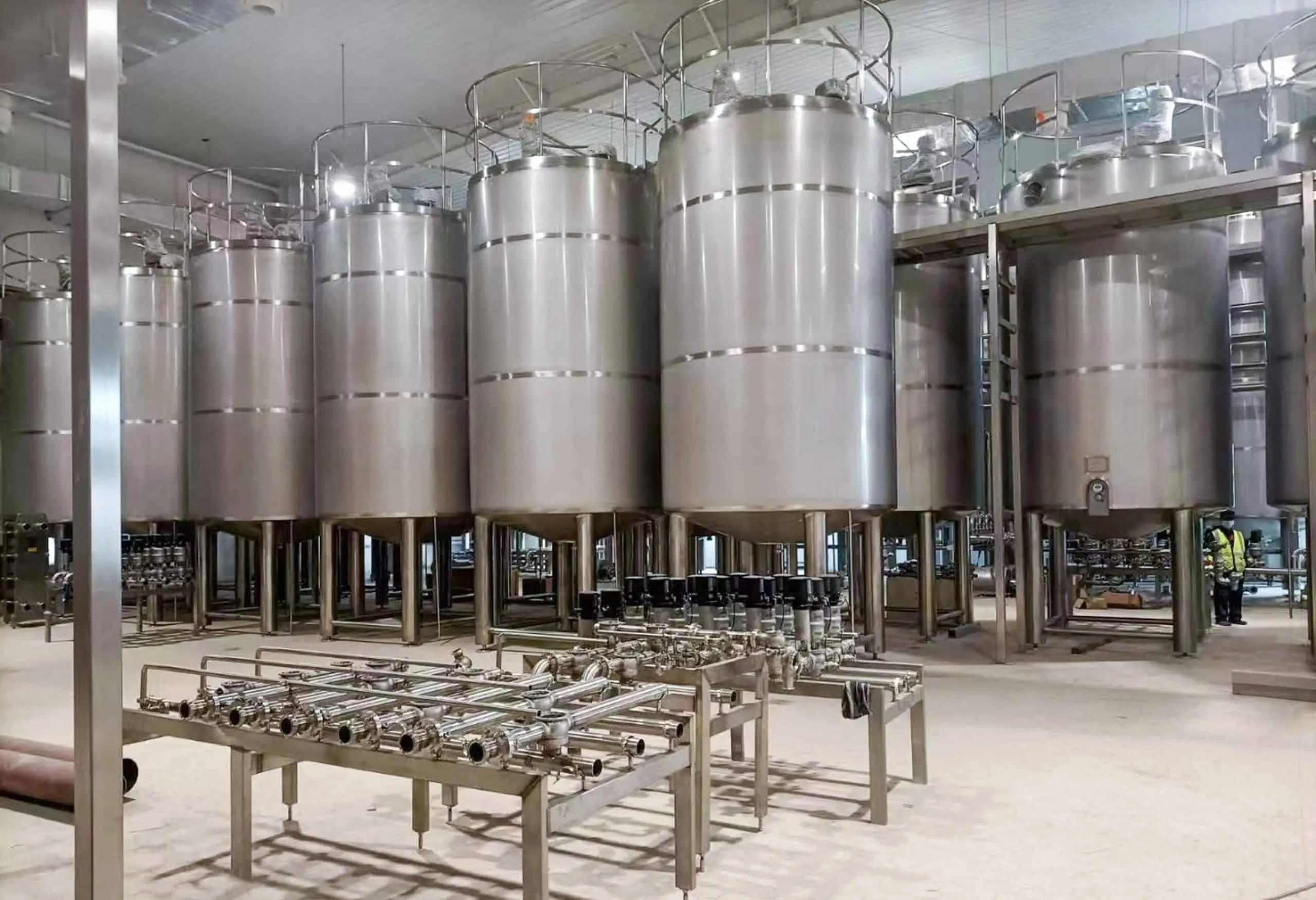Einführung

In der Lebensmittelindustrie ist die Einhaltung strenger Hygienestandards nicht nur eine gesetzliche Anforderung, sondern auch ein grundlegender Aspekt zur Gewährleistung der Verbrauchersicherheit und Produktqualität. Clean-in-Place-Geräte (CIP) spielen eine entscheidende Rolle bei der effizienten und effektiven Erreichung und Einhaltung dieser Standards. In diesem Blog werden die Bedeutung von Clean-in-Place-Geräten, ihre Komponenten, betrieblichen Vorteile, Industriestandards und praktische Umsetzungsrichtlinien im Detail untersucht.
Verständnis Clean in Place Equipment
Clean in Place (CIP) equipment is designed to automate the cleaning process of industrial equipment without the need for disassembly. This method involves the circulation of specialized cleaning solutions through pipes, tanks, and other processing equipment to remove residues, microorganisms, and other contaminants that could compromise product quality or safety.
Components of CIP Systems
A typical CIP system consists of several essential components:
- Tanks and Chemical Storage: Where cleaning solutions, detergents, and sanitizers are stored.
- Pumps and Valves: Responsible for circulating cleaning fluids throughout the system at controlled flow rates.
- Wärmetauscher: Used to heat or cool cleaning solutions as required for optimal cleaning effectiveness.
- Steuerungssysteme: To monitor and regulate the clean in place process parameters such as temperature, pressure, and flow rates.
- Instrumentation: Including sensors and gauges to ensure proper functioning and to provide data for process control and validation.
Bedeutung von Clean in Place Equipment
Maintaining clean equipment is critical for preventing contamination, ensuring product quality, and complying with strict food safety regulations. CIP systems offer several key advantages over traditional cleaning methods:
- Effizienz: Reduces downtime by cleaning equipment in place, eliminating the need for disassembly and reassembly.
- Konsistenz: Ensures uniform cleaning across all equipment, reducing variability in cleaning efficacy.
- Sicherheit: Minimizes the risk of exposure to potentially harmful chemicals and pathogens during manual cleaning processes.
- Qualitätssicherung: Helps maintain product integrity by reducing the risk of cross-contamination and flavor transfer between batches.
- Operational Cost Savings: Decreases labor costs associated with manual cleaning processes and reduces water and chemical usage.
Case Study: Effectiveness of CIP in Food Processing Plants
For example, a comparative study conducted in food processing plants demonstrated that clean in place systems significantly reduce microbial contamination levels and operational downtime compared to manual cleaning methods. This efficiency translates into improved production capacity and reduced risk of product recalls due to contamination issues.
Industry Standards and Regulations
Adherence to industry standards and regulations is crucial for ensuring the effectiveness and safety of clean in place equipment in food processing facilities. Regulatory bodies such as the FDA (Food and Drug Administration) and USDA (United States Department of Agriculture) have established stringent guidelines for cleaning procedures and sanitation practices.
Comparing Global Standards for clean in place Equipment
Different regions may have varying standards and regulations concerning clean in place equipment and cleaning procedures:
| Standard | Beschreibung |
|---|---|
| FDA Guidelines | Prescribe specific requirements for cleaning procedures and approved chemicals for use in food processing equipment. |
| European Norms | Define standards for the design, construction, and performance of CIP equipment to ensure hygiene and food safety. |
| ISO Certification | Provide international benchmarks for quality management systems and cleanliness standards in food production. |
Implementing an Effective KVP Programm

Successful implementation of a CIP program requires careful planning, execution, and ongoing maintenance to ensure optimal performance and compliance with regulatory requirements.
Checklist for Effective CIP Implementation
- Preparation: Thoroughly flush equipment with water to remove bulk residues before initiating the CIP cycle.
- Reinigung: Circulate appropriate cleaning solutions through the clean in place system at specified temperatures and flow rates to ensure thorough cleaning of all surfaces.
- Rinsing: Rinse equipment thoroughly with clean water to remove residual cleaning agents and sanitize surfaces.
- Validation: Verify the effectiveness of the cleaning process through visual inspection, microbial swab testing, or other validated methods to ensure compliance with cleanliness standards.
Abschluss
Clean in Place (CIP) equipment is indispensable in the food industry for maintaining high standards of hygiene, ensuring product quality, and mitigating the risks associated with contamination. By adhering to industry regulations and implementing robust CIP programs, food manufacturers can uphold consumer trust, comply with regulatory requirements, and optimize operational efficiency.
Häufig gestellte Fragen
Q: What are the primary benefits of using Reinigung vor Ort?
A: clean in place equipment offers significant advantages such as reduced downtime, consistent cleaning results, improved safety, and enhanced product quality.
F: Wie oft sollte Reinigung vor Ort be inspected?
A: clean in place equipment should be inspected regularly based on manufacturer recommendations and usage patterns to ensure proper functioning and cleanliness.
Q: What cleaning agents are commonly used in sauber an Ort und Stelle Systeme?
A: Cleaning agents used in clean in place systems vary depending on the type of residue to be removed and the material compatibility of the equipment. Common agents include alkaline, acidic, and enzymatic cleaners tailored to specific cleaning needs.

